Riboflavin (E101), also known as vitamin B2, is an easily absorbed micronutrient with a key role in maintaining health in humans and animals. It is the central component of the cofactors FAD and FMN, and is therefore required by all flavoproteins. As such, vitamin B2 is required for a wide variety of cellular processes. Like the other B vitamins, it plays a key role in energy metabolism, and is required for the metabolism of fats, ketone bodies, carbohydrates, and proteins.
Milk, cheese, leafy green vegetables, liver, kidneys, legumes such as mature soybeans, yeast and almonds[citation needed] are good sources of vitamin B2, but exposure to light destroys riboflavin.
The name "riboflavin" comes from "ribose" and "flavin".
Riboflavin is yellow or yellow-orange in color and in addition to being used as a food coloring[citation needed] it is also used to fortify some foods[citation needed]. It is used in baby foods, breakfast cereals, pastas, sauces, processed cheese, fruit drinks, vitamin-enriched milk products, some energy drinks, and is widely used in vitamin supplements.
Large quantities of riboflavin are often included in multi-vitamins; Often, the dose is far more than a normal human can use in a day. The excess is excreted in the urine, causing the urine to be colored bright yellow within a few hours of ingestion of the vitamin.
It is difficult to incorporate riboflavin into many liquid products because it has poor solubility in water. Hence the requirement for riboflavin-5'-phosphate (E101a), a more expensive but more soluble form of riboflavin.


 Audited Supplier
Audited Supplier 





 Audited Supplier
Audited Supplier